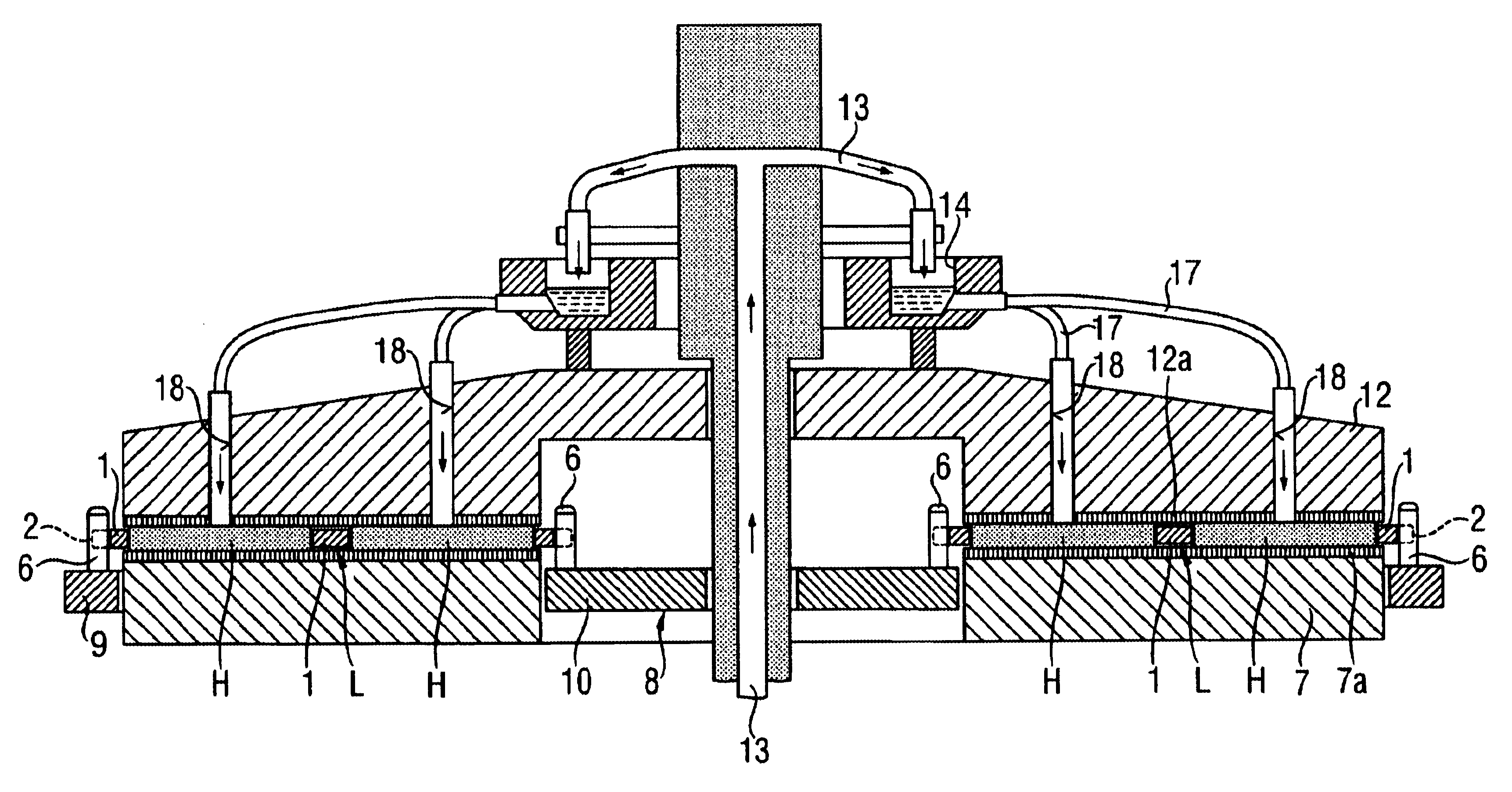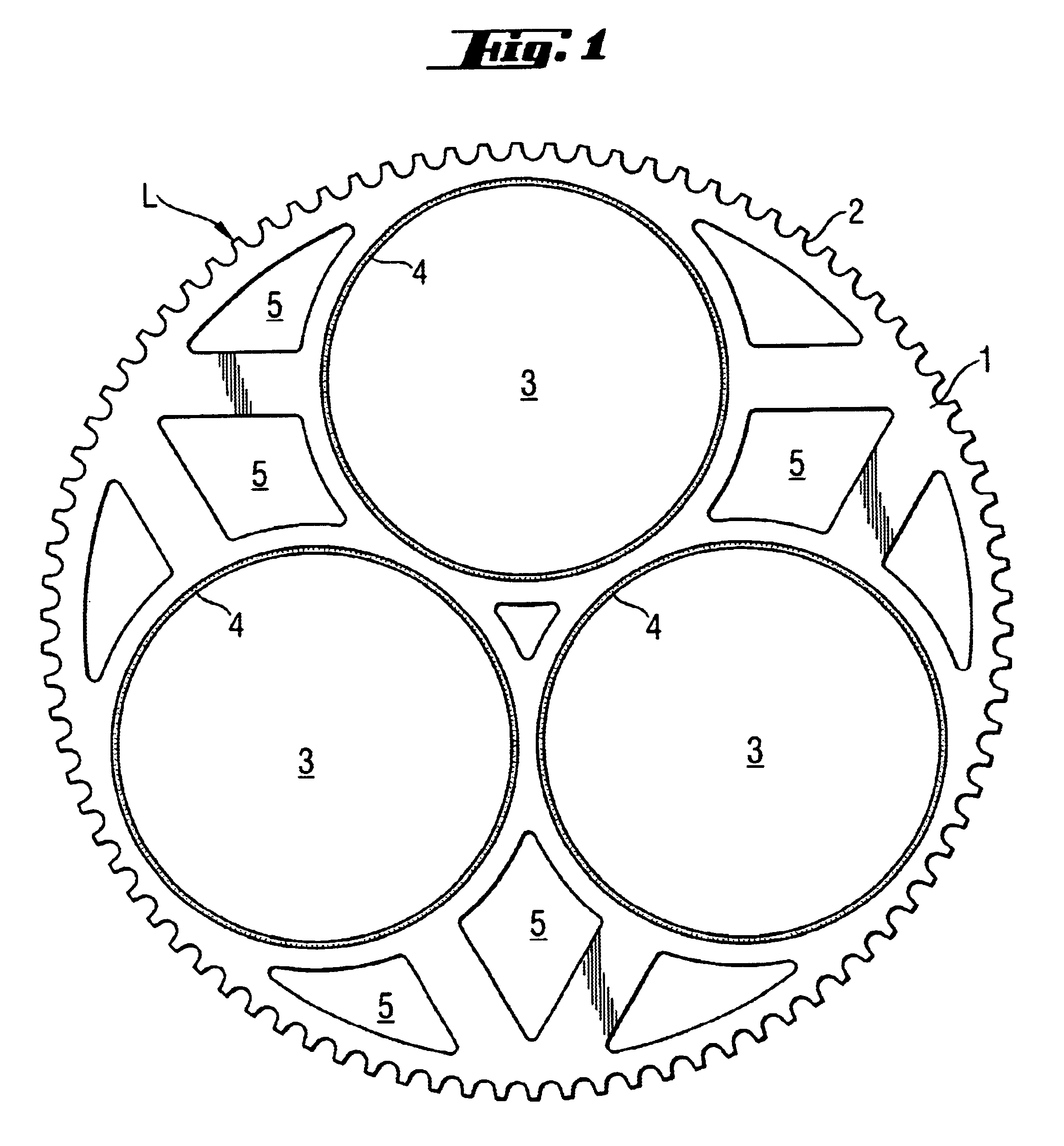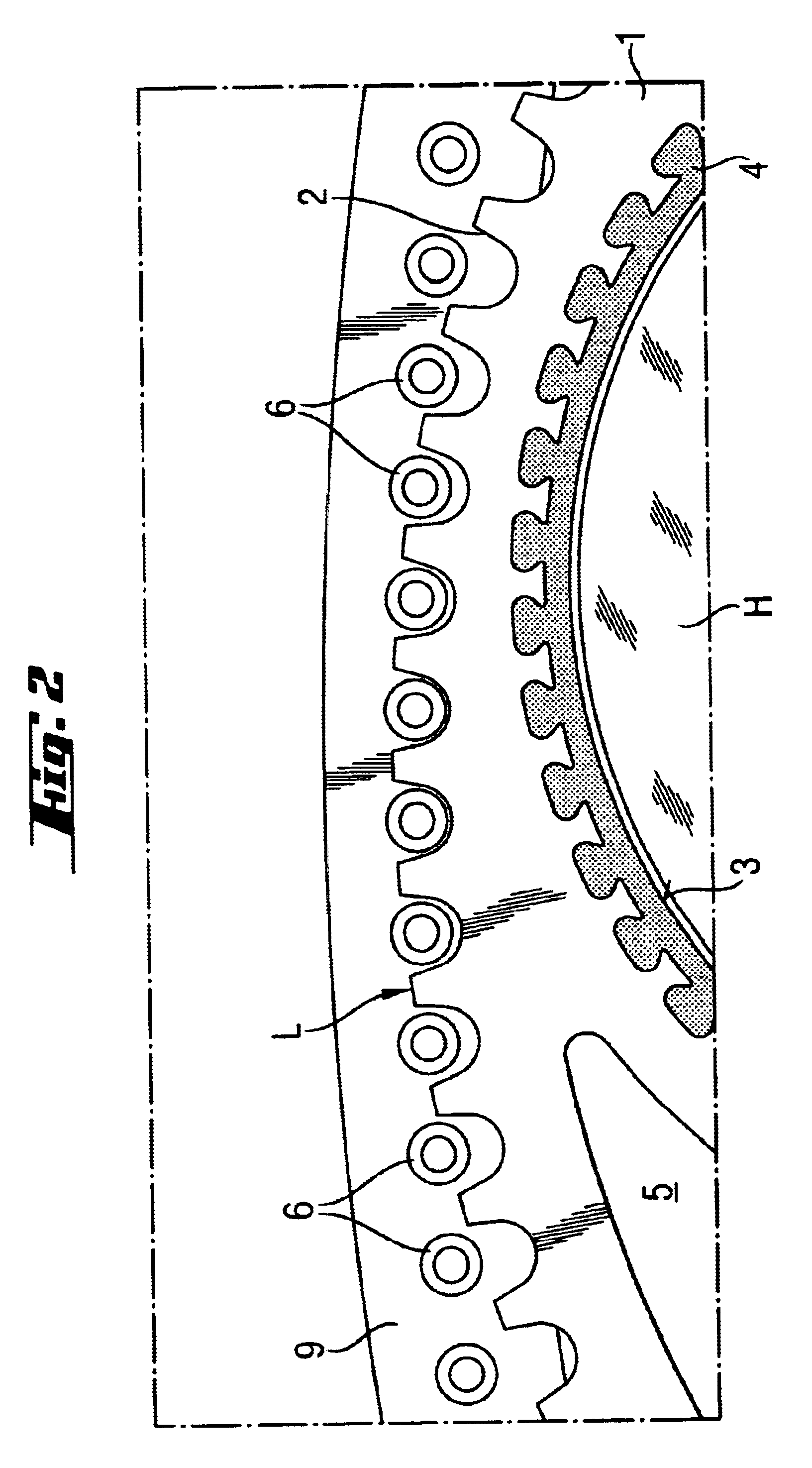Double-side polishing process with reduced scratch rate and device for carrying out the process
a technology of polishing process and chip, which is applied in the direction of grinding machine, manufacturing tool, lapping machine, etc., can solve the problems of crystallite formation, scratches on the polished semiconductor wafer, and insufficient conventional single-side polishing process to produce semiconductor wafers
- Summary
- Abstract
- Description
- Claims
- Application Information
AI Technical Summary
Benefits of technology
Problems solved by technology
Method used
Image
Examples
Embodiment Construction
Silicon wafers which had been edge-rounded, ground (removal of silicon 90 .mu.m) and acid-etched in a mixture of concentrated nitric acid and hydrofluoric acid (silicon removal 20 .mu.m), with a diameter of 300 mm and a thickness of 805 .mu.m were available on a production scale for the Example and the Comparative Example. In addition, there were five carriers as shown in FIG. 1. The carriers L comprised a polished metal body 1 made from stainless chromium steel with a mean thickness of 770 .mu.m, which had a circumferential ring gear 2 comprising semicircular cutouts, with which, as shown in FIG. 2, pins 6 of the outer and inner drive pin wheel of a double-side polishing machine engage, so that the carriers can be set in rotation. In each case three circular cutouts 3 which are arrange at regular intervals over a circular path were lined with frames 4 of polyvinylidene difluoride, which had an internal diameter of 301 mm and were of the same thickness as the carrier 1, were connect...
PUM
| Property | Measurement | Unit |
|---|---|---|
| diameters | aaaaa | aaaaa |
| diameters | aaaaa | aaaaa |
| diameters | aaaaa | aaaaa |
Abstract
Description
Claims
Application Information
 Login to View More
Login to View More - R&D
- Intellectual Property
- Life Sciences
- Materials
- Tech Scout
- Unparalleled Data Quality
- Higher Quality Content
- 60% Fewer Hallucinations
Browse by: Latest US Patents, China's latest patents, Technical Efficacy Thesaurus, Application Domain, Technology Topic, Popular Technical Reports.
© 2025 PatSnap. All rights reserved.Legal|Privacy policy|Modern Slavery Act Transparency Statement|Sitemap|About US| Contact US: help@patsnap.com



